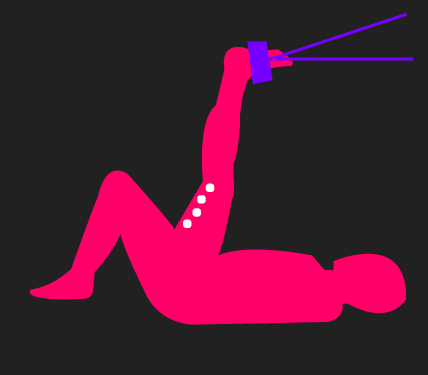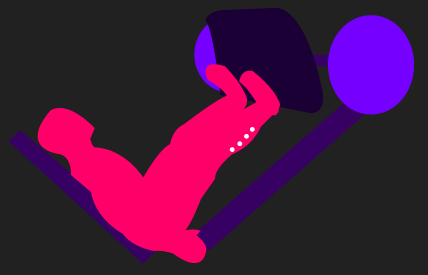
Stretching is a common practice performed for many reasons. Probably one of the lesser thought about reasons is for building muscle. But, does stretching actually build muscle?
The idea that stretching may have the potential to build muscle is not new. However, much of the early evidence was from studies done on animals.
For example, this study by Antonio and Gonyea found that in birds, progressively overloaded stretching (weight was attached to their wings) for 28 days resulted in an incredible 318% increase in muscle mass.
As most know, trying to extrapolate animal studies to humans is problematic.
So, what does the current evidence say with humans, does stretching build muscle in humans?
Stretching and Muscle Growth: The Research
This great review paper by Nunes et al. overviewed the current research on stretching and building muscle in humans.
Let’s dive into their key findings.
Overall, there are currently 10 studies that exist assessing how some form of stretching impacts the muscle architecture of humans.
7 of these studies found that stretching had little impact on measures of muscle growth, while 3 studies found that stretching did increase some measures of muscle growth.
From this, you may be thinking that given the majority of studies find no impact of stretching on measurements of muscle growth, stretching does not build muscle.
However, if we looked carefully at the details of these studies, we would find something quite interesting.
The majority of the studies that found no impact of stretching on measures of muscle growth used low intensity, normal passive stretching.
To give you an idea of what low intensity, normal passive stretching may look like, let’s take a look at one of those studies by Moltubakk.
Subjects performed 60 seconds of calf stretches four times per day for 24 weeks.
The stretch looked like this:

At the end of the study, no significant growth of the calf muscles was found.
Opposingly, the 3 studies that did find a beneficial effect of stretching on measures of muscle growth used some form of overload.
Let’s detail each one.
Freitas and Milhemens found that performing an intensive 450 seconds hamstring stretch (which was at maximum passive torque), roughly three times per week for 8 weeks significantly increased biceps femoris (part of the hamstrings) fascicle length (potentially implying muscle hypertrophy). The stretch looked like this (the foot is being pulled back, resulting in a hamstring stretch):

A paper by Mizuno found that performing 4 sets of 30 seconds calf stretching at the highest incline on a calf board, three times per week for 8 weeks resulted in significant increases in gastrocnemius (part of the calves) thickness. The stretch looked like this (the calf board dorsiflexes the ankle, resulting in a calf stretch):

Simpson et al. found that performing a calf stretch on a loaded leg press machine for 180 seconds, five times per week for 6 weeks resulted in significant increases in thickness and fascicle length of the gastrocnemii (part of the calves). The stretch looked like this (the ankles are dorsiflexed on the leg press machine, resulting in a calf stretch):

Before moving on, if you’re curious about creating an effective training program for muscle hypertrophy, our high quality partner Alpha Progression can help. It can generate a highly effective program for you, track your workouts live with in-built progression recommendations, provide graphs displaying your long term progress, and it has a massive exercise database with more than 550 exercises.
Click HERE (the link opens in a new tab) to get a free 2 week trial of the apps features. If you like it and go beyond, the link also gives you 20% off a subscription!
We never promote trash at the House of Hypertrophy, so rest assured the app is high quality. The reviews speak to this, 4.8 starts (based on more than 7,000 reviews) on Google play, and 4.9 stars in Apple’s store (based on nearly 400 ratings).
Conclusions
To conclude, stretching does seem to have the potential to build muscle in humans. However, the details do appear to matter. Low-intensity stretching does not seem to produce growth, but overloading a stretch may indeed cause muscle growth.
As we have seen from the three studies, this overload can be accomplished in a few different ways. Freitas and Milhemens performed a long duration stretch at maximum passive torque production. Mizuno used the highest incline on a calf board in which the participant’s bodyweight loaded the stretch. Lastly, Simpson et al. used a leg press machine to load a calf stretch.
Interestingly, we actually have some research, on which we created a whole article on, exploring if stretching between sets could improve muscle and strength gain.
Remember to feel free to check out the Alpha Progression App if you’re interested. Also feel free to check out our free bench press e-book below.

